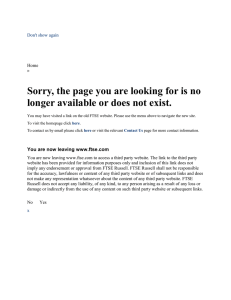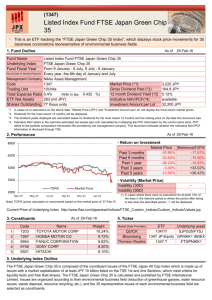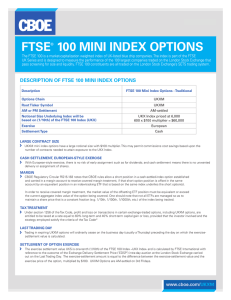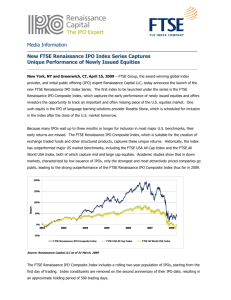Chinese Whispers - Rowan Dartington Signature
advertisement
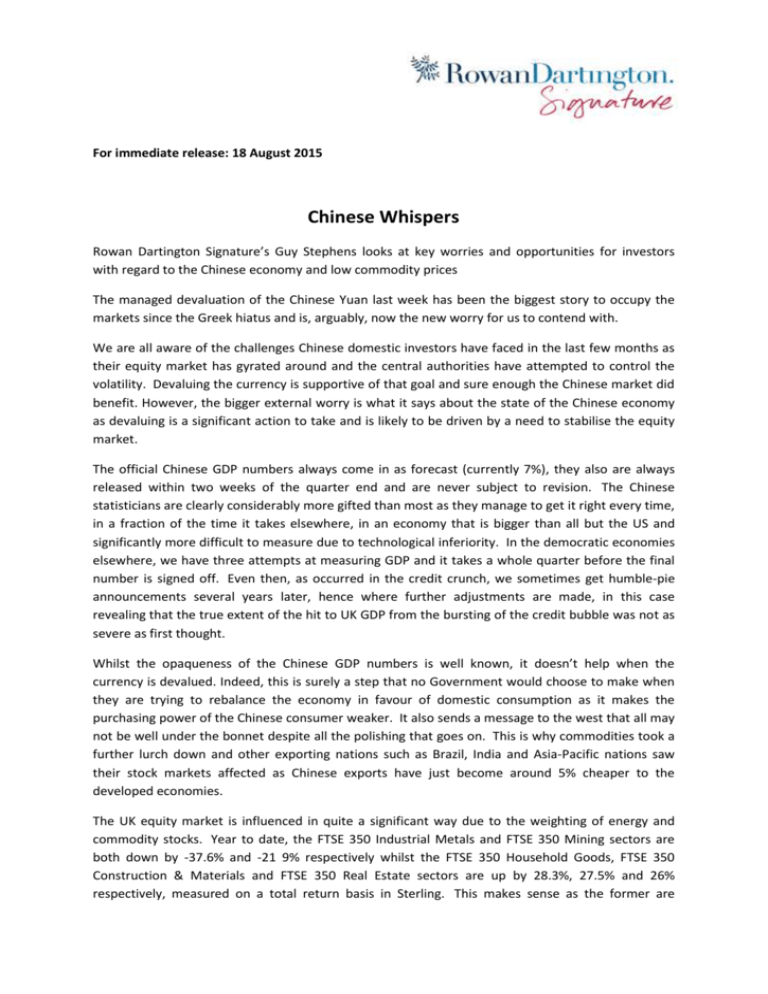
For immediate release: 18 August 2015 Chinese Whispers Rowan Dartington Signature’s Guy Stephens looks at key worries and opportunities for investors with regard to the Chinese economy and low commodity prices The managed devaluation of the Chinese Yuan last week has been the biggest story to occupy the markets since the Greek hiatus and is, arguably, now the new worry for us to contend with. We are all aware of the challenges Chinese domestic investors have faced in the last few months as their equity market has gyrated around and the central authorities have attempted to control the volatility. Devaluing the currency is supportive of that goal and sure enough the Chinese market did benefit. However, the bigger external worry is what it says about the state of the Chinese economy as devaluing is a significant action to take and is likely to be driven by a need to stabilise the equity market. The official Chinese GDP numbers always come in as forecast (currently 7%), they also are always released within two weeks of the quarter end and are never subject to revision. The Chinese statisticians are clearly considerably more gifted than most as they manage to get it right every time, in a fraction of the time it takes elsewhere, in an economy that is bigger than all but the US and significantly more difficult to measure due to technological inferiority. In the democratic economies elsewhere, we have three attempts at measuring GDP and it takes a whole quarter before the final number is signed off. Even then, as occurred in the credit crunch, we sometimes get humble-pie announcements several years later, hence where further adjustments are made, in this case revealing that the true extent of the hit to UK GDP from the bursting of the credit bubble was not as severe as first thought. Whilst the opaqueness of the Chinese GDP numbers is well known, it doesn’t help when the currency is devalued. Indeed, this is surely a step that no Government would choose to make when they are trying to rebalance the economy in favour of domestic consumption as it makes the purchasing power of the Chinese consumer weaker. It also sends a message to the west that all may not be well under the bonnet despite all the polishing that goes on. This is why commodities took a further lurch down and other exporting nations such as Brazil, India and Asia-Pacific nations saw their stock markets affected as Chinese exports have just become around 5% cheaper to the developed economies. The UK equity market is influenced in quite a significant way due to the weighting of energy and commodity stocks. Year to date, the FTSE 350 Industrial Metals and FTSE 350 Mining sectors are both down by -37.6% and -21 9% respectively whilst the FTSE 350 Household Goods, FTSE 350 Construction & Materials and FTSE 350 Real Estate sectors are up by 28.3%, 27.5% and 26% respectively, measured on a total return basis in Sterling. This makes sense as the former are directly connected to the China story, the shrinking oil price and the strong US Dollar, whilst the latter are a function of consumer spending, boosted by lower fuel prices, a booming housing market and a buoyant commercial property market. In a broader context, the FTSE 350 as a whole, is up 4% year to date whereas the FTSE 100 is up by just 2.6%. The greater weighting of mining and oil businesses in the FTSE 100 and the greater weighting of consumer and property businesses in the FTSE 250 is influencing these trends. So far, 2015 has been a year for the active managers who have been able to play these sectorial disparities to the advantage of their investors. In addition, this has suited our collective fund selections, which are always overweight to the FTSE 250 where the excess returns lie, meaning that there have been plenty of attractive returns to be had, despite the perception that the equity market has gone nowhere this year. In fact, all of our collective models have beaten the FTSE 100 so far this year, even the most defensive, showing just how poor the FTSE 100 has been as an investment universe. There is a similar story to be told in terms of performance in the US and indeed, the rest of the world. Year to date, the S&P 500, in Sterling terms, has risen by 2.4% and the rest or the world, excluding the UK has risen by 2.6%, all very pedestrian. However, the FTSE 250 index has risen by 11.4% and the Small Caps are up by 9.5%, both of which are dominated by domestic businesses. Similarly, in overseas markets, domestic businesses are doing considerably better than their larger, more global, brethren. This is probably not surprising as the key worries this year are of global proportions where the linkage between issues such as Greece/EU and China/Global GDP are clear for all to see. As for China, cheaper exports means less inflation in the west and therefore a reduced possibility that interest rates will rise, which is a good thing. Commodity prices and oil prices look like they will be staying very subdued until well into next year which is always positive in terms of business costs. The consumer is experiencing some wage growth as well as lower fuel costs along with a buoyant property market at rock bottom interest rates, which are unlikely to rise by much even when interest rates start moving up. So the domestic sectors look set fair. It used to be said that when America sneezes the rest of the world catches a cold. With China adjusting its currency, for whatever reason, all eyes will be on future economic data releases to see whether there is a dose of Asian Flu ahead.
